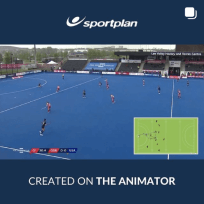TRANSFORM YOUR TEAM'S SEASON WITH PROFESSIONALLY PLANNED SESSIONS
Use our expert plans or build your own using our library of over 700+ drills, and easy-to-use tools.
JOIN NOWWe practice weekly about staying in position, widening the field and using outletting to move the ball up field. They execute in practice, but when it comes time to play most players do not stay disciplined and crowd the ball on one side or another.............How do I fix this Players are U19
Your team need to realise that its not the fixed positioning they must remember, it is the shape they hold as a team. As in game situations, there might be a turnover which means your team have the opportunity to attack and you donât want them to miss out just because âitâs not their position to go for the ballâ. This will mean the rest of the team will need react accordingly and hold restructure their shape to avoid potential threats from the opposition.
Even though your players seem to be executing well in training, I would recommend the below drill to really emphasise maintaining shape.
Start with a small sided game with 3 zones (perhaps attacking, midfield and defensive zones), then restrict the number of players that allowed in any one zone at a time. Its good to get them thinking about the minimum and maximum numbers in the zones rather than absolute, this will help them think about how it will be different depending on the game dynamics.
You can tell one team (without the other knowing) which shape to hold, this will force the opposition to restructure their side to compensate for new threats.
Hopefully this will get the team thinking about reacting to similar situations within a game scenario rather than all being hungry for the ball and chasing after it!
Let me know how you get on!
Your team need to realise that its not the fixed positioning they must remember, it is the shape they hold as a team. As in game situations, there might be a turnover which means your team have the opportunity to attack and you donât want them to miss out just because âitâs not their position to go for the ballâ. This will mean the rest of the team will need react accordingly and hold restructure their shape to avoid potential threats from the opposition.
Even though your players seem to be executing well in training, I would recommend the below drill to really emphasise maintaining shape.
Start with a small sided game with 3 zones (perhaps attacking, midfield and defensive zones), then restrict the number of players that allowed in any one zone at a time. Its good to get them thinking about the minimum and maximum numbers in the zones rather than absolute, this will help them think about how it will be different depending on the game dynamics.
You can tell one team (without the other knowing) which shape to hold, this will force the opposition to restructure their side to compensate for new threats.
Hopefully this will get the team thinking about reacting to similar situations within a game scenario rather than all being hungry for the ball and chasing after it!
Let me know how you get on!
Thanks for drill, I haven had an opportunity to try it yet but will. They played again last weekend and executed with perfection, they stayed in formation, controlled the ball with great all around field passing. So I dont know what changed, except it was a weaker team that we played
Are you playing in training under pressure and are you using questioning to equate what they do in training to game situations?
One problem I`ve found is that young players in particular are very smart - if there is an easy way to do something or `hack` the process then they`ll take it. So, in training they work out what needs to be done to achieve success at the exact problem you`ve presented them with - but nothing more. That`s why they`ll succeed in training but as soon as you introduce a slight differential it`ll fall to pieces.
Think of it like a maths problem: the players know that 2x2=4, but do they know the process behind why? They know that 2x2=4, but have they simply learned this exact math problem, or their entire 2x table? If faced with a situation in a game that looks like 2x3, which simply requires they 2x table formula to complete, do they get 6, or are they confused because they`ve simply learned to recite 2x2=4 and not the 2x table needed?
Therefore I try to ensure that players understand why situations might occur on a pitch, the key skills that will help them cope with this situation and ones like it, and how they can use those skills to adapt should the situation change.
Hope that helps!
good explanation coach luke
Answered using Sportplan on Mobile

in more ways than one




As the Lions tour approaches with their first tour game this Friday against Argentina, we look ahead at what the fans can expect to see from both sides as the tour in Australia approaches...

Introducing the Sportplan FootballBot. Your new coaching partner that has all the answers to the questions you may have...

Introducing the Sportplan RugbyBot. Your new coaching new coaching partner that has all the answers to the questions you may have...
Use our expert plans or build your own using our library of over 700+ drills, and easy-to-use tools.
JOIN NOW